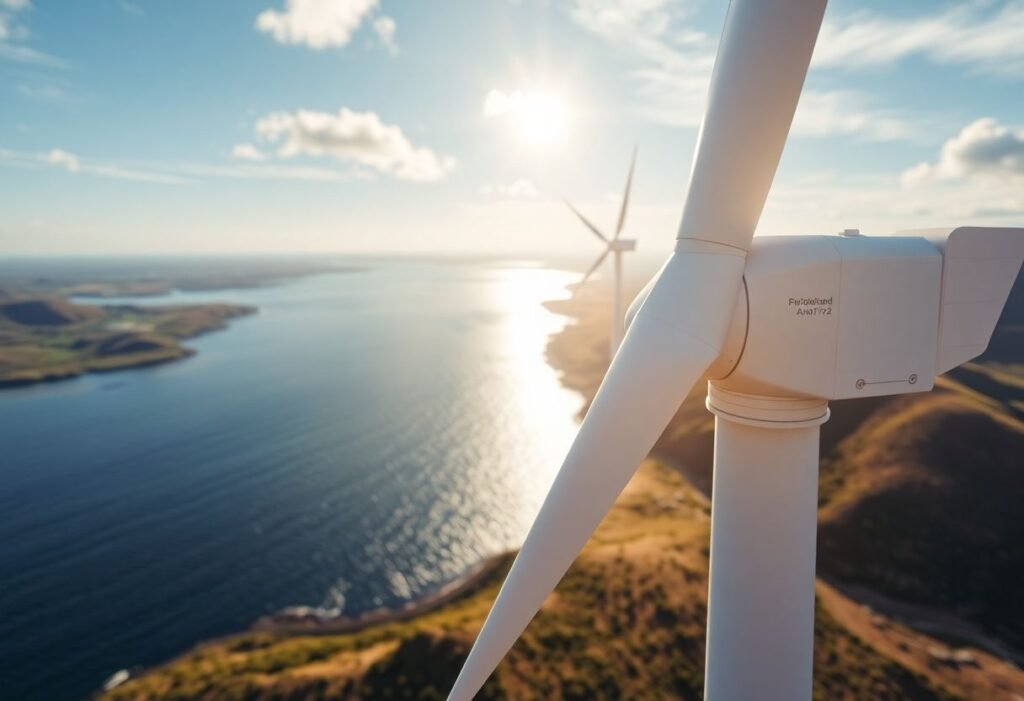Wind energy has emerged as one of the most promising sources of renewable power in the quest for sustainable solutions. This article explores the latest innovations in wind energy technologies, highlighting how these advancements are revolutionizing the industry and contributing to global efforts against climate change.
Advancements in Turbine Design
Modern wind turbines have seen significant enhancements in their design, primarily aimed at increasing efficiency and reducing costs. Innovations include larger rotor diameters, which allow turbines to capture more wind energy at lower speeds. The incorporation of materials such as carbon-fiber composites also leads to lighter and stronger blades, enabling better performance and longevity. Furthermore, adaptive turbine systems now adjust blade angles in real time, optimizing energy production. These advancements contribute substantially to the transformation of wind energy into a mainstream power source.
Offshore Wind Farms
Offshore wind energy is witnessing groundbreaking advancements with larger, floating wind turbines gaining traction. These floating platforms can be anchored in deeper waters, where winds are more stable and stronger. This technology reduces conflicts with shipping routes and fishing activities, while expanding the potential for energy generation. The growth of offshore wind farms is expected to provide a significant boost to global energy supply and support the transition towards a clean-energy future.
Energy Storage Solutions
Innovations in energy storage technologies play a crucial role in wind energy sustainability. One notable advancement is the integration of large-scale battery storage systems, which can store excess energy generated during peak production periods. This stored energy can then be delivered to the grid when demand increases, addressing the intermittent nature of wind generation. The development of advanced storage systems ensures a steady and reliable energy supply, enhancing the viability of wind power.
Smart Wind Farms with IoT
The Internet of Things (IoT) is making a profound impact on wind energy through the development of smart wind farms. By utilizing IoT devices, operators can monitor and manage turbines more effectively, ensuring optimal performance and reducing maintenance costs. Data analytics provide insights for predictive maintenance, allowing for proactive interventions that minimize downtime and maximize productivity. The synergy between IoT and wind energy technology is paving the way for smarter and more efficient energy solutions.
Turbine Automation and AI
The application of Artificial Intelligence (AI) in turbine operations is transforming how wind energy systems are managed. AI-driven algorithms can optimize turbine operations by analyzing weather data, wind patterns, and operational performance. This real-time decision-making enhances the efficiency of energy production and minimizes operational risks. The fusion of AI with turbine management represents a cutting-edge approach to maximizing output from existing wind resources.
Regulatory Support and Policies
Finally, supportive government policies and incentives are essential for fostering innovation in wind energy. Collaborations between public and private sectors contribute to the growth and development of new technologies. Governments worldwide are setting ambitious goals for renewable energy adoption, promoting research and development initiatives aimed at enhancing the efficiency and performance of wind energy systems. Together, regulatory frameworks and innovative technologies are crucial for driving the future of wind energy.
Disclaimer: The information provided in this article is for informational purposes only and does not constitute professional advice.





















